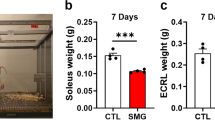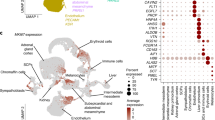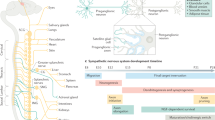Abstract
ABSTRACT: Thyroxine (T4) administration in mice during the 2nd wk of postnatal life elicits a precocious increase in submandibular gland-nerve growth factor (SMG-NGF) and epidermal growth factor (SMG-EGF) levels, but the mechanism(s) of T4 action has not been studied. The present report examines the role of the developing sympathetic nervous system (SNS) in the SMG-NGF and EGF responses to T4. For this purpose newborn mice were injected with T4 and/or 6-hydroxydopamine, a toxic congener of norephinephrine which causes selective destruction of sympathetic nerve terminals. The effectiveness of chemical sympathectomy was assessed by SMG-norepinephrine measurements using a sensitive radioenzymatic assay. The glandular norepinephrine contents were greatly reduced indicating that the dose and duration of 6-OHDA treatment were sufficient to cause a total sympathectomy in SMG tissue. In addition, the 6-OHDA treatment greatly reduced the wet weight and total protein content of the sympathetic superior cervical ganglia which innervate SMG tissue. SMG-NGF and EGF concentrations were measured by specific radioimmunoassays. 6-OHDA treatment alone did not affect the basal SMG-NGF and EGF concentrations. However, the maximal responses of SMGNGF and EGF to T4 administration were greatly reduced by concurrent treatment with 6-OHDA. In summary, the data demonstrate a critical role for developing sympathetic nervous system in the T4-stimulated increase in SMG-NGF and EGF concentrations.
Similar content being viewed by others
Log in or create a free account to read this content
Gain free access to this article, as well as selected content from this journal and more on nature.com
or
Author information
Authors and Affiliations
Rights and permissions
About this article
Cite this article
Lakshmanan, J., Padbury, J., Macaso, T. et al. Involvement of Developing Sympathetic Nervous System in Thyroxine-Mediated Submandibular Gland Nerve Growth Factor and Epidermal Growth Factor Responses. Pediatr Res 20, 232–236 (1986). https://doi.org/10.1203/00006450-198603000-00007
Received:
Accepted:
Issue date:
DOI: https://doi.org/10.1203/00006450-198603000-00007



